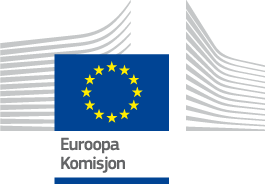

Country Factsheet
Although the fishing sector represents a minor part of the Swedish economy, it nevertheless plays an important role for some regions and communities. The key goals that CLLD has to pursue in Sweden’s fisheries areas are increasing the competitiveness of small and medium-sized enterprises; protecting the environment (especially the Baltic Sea) and promoting the sustainable use of resources; and also promoting employment and diversification of fishermen and fisheries actors. These goals are at the core of the 13 Swedish FLAGs’ strategies.
Although the fishing sector represents a minor part of Sweden's GDP (around 0.10%) it nevertheless plays an important role for some regions and communities. In 2013, the total value of landings by the Swedish national fleet was €131.2 million, an increase of 7% compared to 2008. The catch sector boasts 886 full time equivalent (FTE) employees. In 2012, the aquaculture sector, with 263 FTE employees, generated a gross revenue of €49.8 million, and turned a net profit of €5.7 million. The fish processing sector, with 1 831 FTE employees in 2012, generated €613.2 million in gross revenue and turned a net profit of €12.8 million.
Contact details of the managing authority can be found here.
More information about national EMFF programmes can be found here.
In the previous programming period, Sweden had a total of 14 FLAGs, some of them combined with LEADER LAG (ten coastal FLAGs and four inland FLAGs).
The main achievements of Axis 4 include the following:
The main challenges that community-led local development will face in Sweden’s fisheries areas in the coming years are:
To cope with these challenges, the objectives for CLLD in Sweden 2014-2020 are:
The number of FLAGs decreased from 14 to 13 when two of the former areas were merged. Compared to the 2007-2013 period, the total budget for CLLD has remained stable. The budget for FLAGs has also remained stable as a result.
Swedish FLAGs have already cooperated with LEADER LAGs between 2007 and 2013.
During the period 2014-2020, the Swedish CLLD groups have the possibility to be multi-funded and have access to all ESI funds (EAFRD, ESF, ERDF, EMFF).
Nine of the 13 groups are multi-funded. Four are separate FLAGs and manage functional fisheries areas covering coherent water systems like lakes or rivers. Detailed information as to which LAGs have access to which funds can be found here.
The Swedish National Rural Network (NRN, www.landsbygdsnatverket.se) of the Rural Development Programme, provides support to all CLLD actors of the four ESI Funds. It also brings together all rural and fisheries actors from the local, regional and national level and, as such, acts as a platform integrating the different levels and the different funds.
A special thematic group focusing on fisheries and aquaculture has been set up within the NRN. It is funded through the EMFF and goes beyond the FLAGs, who are just one of its stakeholders. The thematic groups also bring together the fishermen’s and aquaculture organisations, the nature protection association, the game fishing sector and regional authorities. The thematic group will have four aims:
Click here for the National Network contact details.
For the EMFF funding period 12 cooperation projects were reported by the managing authority by December 2021, including a study visit to France to explore ways to promote and market oysters produced in Sweden.
For information on how cooperation was programmed and organised in Sweden, click here.
The Swedish Board of Agriculture (the Managing Authority for all CLLD funding in Sweden) is responsible for selecting FLAGs.
The call for FLAGs was launched in April 2014, with the deadline for draft applications in December 2015/January 2016 and the final approval of the FLAGs and the strategies taking place between October 2015 and March 2016.
| Code | Name | Region | Surface area (km²) | Population | Population density (per km²) | Employment in fisheries* |
|---|---|---|---|---|---|---|
| SE201 | Tornedalen Haparanda FLAG | Norrbotten |
40157 | 44201 | 2 | 55 |
| SE202 | Vindeälven FLAG | Västerbotten |
13300 | 95875 | 7 | 18 |
| SE203 | Mittland Plus FLAG | Eastern part of Middle Norrland |
25467 | 252064 | 10 | 26 |
| SE204 | Gästrikebygden FLAG | Cental Sweden |
28026 | 292677 | 10 | 116 |
| SE205 | Stockholmsbygd FLAG | Stockholm archipelago |
13461 | 124126 | 9 | 47 |
| SE206 | Gotland FLAG | Gotland |
3134 | 57161 | 18 | 41 |
| SE207 | Sydost FLAG | 12450 | 297000 | 20 | 26 | |
| SE208 | Sydöstra Skåne FLAG | 403 | 204380 | 51 | 143 | |
| SE209 | Skåne Nordväst Norra FLAG | 6517 | 343256 | 50 | 84 | |
| SE210 | Halland FLAG | 5427 | 325000 | 60 | 92 | |
| SE211 | Bohuskust FLAG | 3629 | 223000 | 61 | 2420 | |
| SE212 | Lake Vänern FLAG | 7328 | 170352 | 37 | 210 | |
| SE213 | Lake Vättern FLAG | 5955 | 143413 | 25 | 27 |